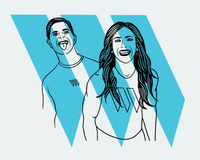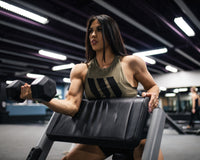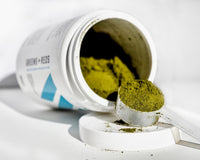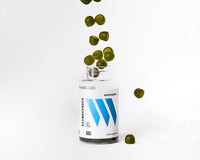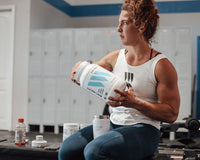As a bilateral lift, many athletes can develop muscular imbalances as the stronger leg will carry most of the strain throughout the lift. The following accessory movements are designed to help you strengthen your squat by specifically addressing muscular imbalances, midline stability, driving power, and bracing strength – all of the essential pieces to building monster quads and a strong back squat.
What Is The Back Squat
The back squat is a compound functional movement, that recruits multiple muscle groups, joints, and stabilizing muscles. Back squat focuses and builds lower body strength and core stability, which is the foundation to several compound movements in functional training modalities.
The barbell back squat is a bilateral movement that helps build full-body strength. Barbell back squats, and back squats in general, demand a strong posterior chain, hamstrings, quads, and a substantial amount of midline stability as well as ankle mobility.
Squats like most functional strength movements, have several different variations, such as box squats, pistol squats, landmine squats, front squats etc. Minor differences exist between each variation, in terms of required mobility, stabilization, and muscle activation.
RELATED ARTICLE 9 Tips To Improve Squat Form And Technique
4 Benefits Of Back Squat
1. Barbell Back Squat Improves Functional Movement
The back squat is a natural, functional movement often found in everyday activity and human movement patterns. For example, picking up something heavy from the floor, will require you to squat and pick it up, as opposed to bending over, and recruiting your back, which can result in injury. Back squat can provide benefits to the natural progression of human movement, increasing your strength and core stability, to reduce the risk of injury, while improving overall quality of life
2. Barbell Back Squat Improves Bracing Mechanism & Overall Joint Health
Back squats require more than just your legs to perform this movement. Back squats are a compound movement, meaning you actively engage a number of muscle groups and joints. When you squat, you actively brace your core which will engage a number of muscle groups to assist your body in successfully achieving optimal squat depth to drive out of the bottom position for full muscle contraction and extension.
Compound strength movements will naturally require your body to recruit key joints in your ankles, and depending on the specific squat variation, your wrists and elbows. Better mobility in one compound functional movement, will translate across your training program, and help with other strength movements.
3. Barbell Back Squat Builds More Muscle And Strength
Back squat primarily improves your glutes, quadriceps, and hamstrings. The more weight and volume you can move, the more those muscles develop and grow.
4. Barbell Back Squat Improves Explosiveness Under Tension
During the back squat, having the power to drive out of the deficit, bottom position, and carry the weight to the top position requires a lot of control from the body under a large amount on tension. This ability is learned over a period of time and can produce some very impressive squat numbers.
4 Accessory Movements To Build A Bigger Barbell Back Squat
1. Alternating Box Step-Ups
The glutes, abdominals, erector spine, and hamstrings will be pushed and primed as you implement unilateral strength work like single-leg step-ups. These are a reliable movement to ensure that you are working on any muscular imbalances that may be present.
Single leg step-ups are particularly great for improving your ability to drive out of the barbell back squat with weight. One of the most common reasons for a failed squat is the inability to drive the weight out of the bottom of the squat and to a fully locked out ending position.
- With one leg on a 20-24-inch box and weight in the front rack position, single-leg step-ups will develop the strength for each leg individually while teaching your body to brace and drive from a dead-stop, deficit position.
A good way to test for muscular imbalance in your legs is to establish a ten repetition with max weight on the weaker leg, then do as many repetitions as possible with the same weight on the stronger leg. If there is a difference in how many repetitions are completed between both legs, there is most likely a muscular imbalance that needs to be specifically addressed.
2. Bulgarian Split Squats
Bulgarian split squats are another exercise that highlights the importance of unilateral work for the purpose of developing and maintaining an equal amount of power and force in both legs.
- Starting with a surface that is lower than the height of your knees, facing away from the surface, lift one leg and place the top of the foot on the surface.
- Keeping your shoulders stacked directly above your forward-facing hips, begin to descend into a lunging position.
- Go as low as you can while still ensuring your chest is staying open and the front knee is not protruding out in front of your toes.
Bulgarian split squats are key for not only building a bigger barbell back squat, but for building quadriceps and glutes, midline stability, and it offers an awesome range of motion movement for the hip flexors. Weight can be held in the front of the back-rack position for this exercise.
3. Single-Leg Romanian Deadlifts
Being one of my favorite exercises for building a bigger barbell back squat, single-leg Romanian deadlifts are one of the more challenging stability and unilateral exercises for people to complete. As it challenges your midline stability, it actively lights up your posterior chain, primarily the erector spine and hamstrings, standing as a great warm-up or focus piece for movements demanding posterior chain activation. You can perform this movement with a barbell, dumbbell(s), or a kettlebell(s).
- Standing with feet together, arms fully extended holding the weight in front of the hips, tilt your upper body forward, and begin to send on the leg back to counter-balance the weight.
- Actively squeezing the glutes throughout this movement will engage the posterior chain. Begin this movement going to the knee and only go lower if pain, discomfort, or severe stiffness do not present themselves.
4. Tempo Back Squats
Although unilateral work is important to practice and implement into your exercise routine, bilateral squat work can also be beneficial, so long as muscular imbalances are being actively addressed separately.
- From the rack, get under the weight and get to your starting position
- Lower for 3 seconds
- Sit in the bottom of the squat for 5 seconds
- Rise to your starting position in 1 second
- Take a deep inhale and repeat the 3:5:1 tempo back squat
Tempo back squats are an amazing bilateral movement that strengthens your bracing muscles as you spend more time under tension, turning into massive gains with your barbell back squats. These can be done as a bodyweight exercise in your warm-ups or they can be done with weight in the front or back rack position.
Barbell Back Squat: Takeaway
The barbell back squat holds an impressive amount of raw power for athletes. You do not have to sacrifice your squat form or general comfort for strength. Implementing unilateral and tempo work into your daily skill work at the gym is a habit worth establishing as your increased power and strength in squats will hold proof of the hard work you have been putting in. Whether you are chasing a squat PR the next time your gym programs a max day or feeling discomfort throughout your squat on one side or the other, these exercises can help you specifically identify weaknesses and improve your overall squat form.
Need Help With Optimizing Your Nutrition And Training Plan To Finally Get The Results You've Been Waiting For?

SWOLVERINE IS AN ENDURANCE ATHLETE AND ACTIVE LIFESTYLE BRAND. MADE FOR THE ELITE ATHLETE, AND THE STRONG-WILLED OUR PRODUCTS WERE DESIGNED TO FUEL YOUR ATHLETIC PERFORMANCE. WE PERFORM WHEN YOU PERFORM.
We believe that everyone can optimize not only their athletic performance but their human potential. The way we believe we can optimize performance is through transparency, clinically effective doses, and clinically proven ingredients with evidence-based outcomes. We provide the nutrients you need to power your active lifestyle.











